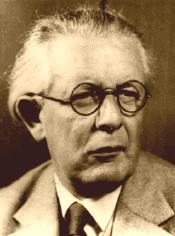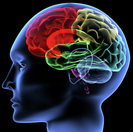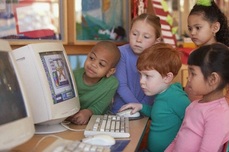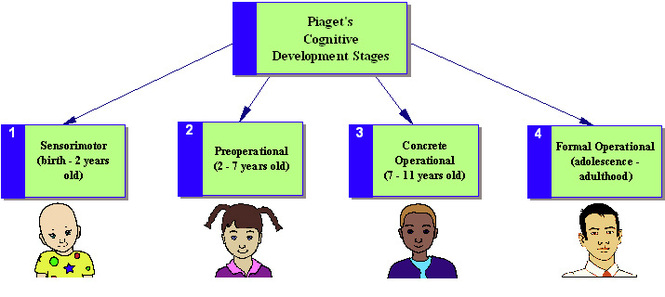Jean Piaget

Theory of Cognitive development of Learning
An interactionist and a Constructivist
Piaget believed that learning is a creative activity and children acquired their knowledge through their exposure to objects within the environment and obtain feedback from their own actions.
Piaget discovered that children think and reason differently in the developmental stages of their lives. He believed that every child passes through four invariant stages. Invariant meaning a person cannot skip stages or reorder them. He does identifiy that there is some variability in the ages at which children attain each stage. Piaget describes cognitive development as a progression of reorganizing mental processes as a result of experience and maturation, and he believed children construct an understanding of the world around them and experience differences between new knowledge and old knowledge. Piaget focuses on three types of knowledge - physical, logical-mathematical, and social-arbitrary.
An interactionist and a Constructivist
Piaget believed that learning is a creative activity and children acquired their knowledge through their exposure to objects within the environment and obtain feedback from their own actions.
Piaget discovered that children think and reason differently in the developmental stages of their lives. He believed that every child passes through four invariant stages. Invariant meaning a person cannot skip stages or reorder them. He does identifiy that there is some variability in the ages at which children attain each stage. Piaget describes cognitive development as a progression of reorganizing mental processes as a result of experience and maturation, and he believed children construct an understanding of the world around them and experience differences between new knowledge and old knowledge. Piaget focuses on three types of knowledge - physical, logical-mathematical, and social-arbitrary.

Sensimotor - using reflexes, behaviour is goal directed, attainment of object permance is the transition milestone. ( child knows the object under the blanket is there and has not disappeared permanently)
Preoperational - can mentally represent objects and events and take on symbolic play (semiotic function), egocentric.(once the child can identify and express that the row of blocks that has more blocks is greater in amount versus length or row is the readiness for the next stage)
Concrete Operational - can engage in conversation - numbers, area, volume, orientation and demonstrate reversibility, solve problems - use logic.
Formal Operational - begin to think in abstract manner, combine and classify items, capable of higher-order reasoning.
Preoperational - can mentally represent objects and events and take on symbolic play (semiotic function), egocentric.(once the child can identify and express that the row of blocks that has more blocks is greater in amount versus length or row is the readiness for the next stage)
Concrete Operational - can engage in conversation - numbers, area, volume, orientation and demonstrate reversibility, solve problems - use logic.
Formal Operational - begin to think in abstract manner, combine and classify items, capable of higher-order reasoning.

Genetic Epistemology (J. Piaget) the process of how a human being develops cognitively from birth throughout life, including the history of scientific ideas. Epistemology - is the theory of knowledge concerned with the nature and scope (limitations) of knowledge.
The following are questions one could ask:
Piaget believed that through processes of assimilation, accommodation and equilibration new knowledge is constructed into an exsisting framework of knowledge through individuals own experiences. Children assimilate from the environment and then accommodate as they incorporate the new experience into a exsisting framework without changing it, however, building on what is already there. Equilibration regulates the balance between assimilation and accommodation to promote cognitive growth and maturation.
The following are questions one could ask:
- What is knowledge?
- How is knowledge acquired?
- What do people know?
- How do we know what we know?
Piaget believed that through processes of assimilation, accommodation and equilibration new knowledge is constructed into an exsisting framework of knowledge through individuals own experiences. Children assimilate from the environment and then accommodate as they incorporate the new experience into a exsisting framework without changing it, however, building on what is already there. Equilibration regulates the balance between assimilation and accommodation to promote cognitive growth and maturation.

IMPLICATIONS FOR EDUCATION
Piagetian curricula emphasizes a learner-centered pedagogy. Therefore, teacher lectures, demonstrations, audio-visual presentations, teaching machines, and programmed instruction does not represent Piaget's theories on the acquisition of knowledge. Piaget adopted active discovery learning environments in schools where children explore, manipulate, experiment, question and search for the answers themselves. This does not suggest that children should do whatever they feel like. Allow children to learn from their mistakes.
Piaget's vision was that teachers were facilitators of knowledge, their role was to simulate knowledge, assess a child's cognitive level through strengths and weaknesses, encourage communication with each other, argue and debate ideas,issues. Learning becomes more meaningful when a child is given opportunties to experiment on their own versus listen to a teacher lecture.
Piagetian curricula emphasizes a learner-centered pedagogy. Therefore, teacher lectures, demonstrations, audio-visual presentations, teaching machines, and programmed instruction does not represent Piaget's theories on the acquisition of knowledge. Piaget adopted active discovery learning environments in schools where children explore, manipulate, experiment, question and search for the answers themselves. This does not suggest that children should do whatever they feel like. Allow children to learn from their mistakes.
Piaget's vision was that teachers were facilitators of knowledge, their role was to simulate knowledge, assess a child's cognitive level through strengths and weaknesses, encourage communication with each other, argue and debate ideas,issues. Learning becomes more meaningful when a child is given opportunties to experiment on their own versus listen to a teacher lecture.

IMPLICATIONS FOR INSTRUCTIONAL TECHNOLOGY
Computer software that represents drill and practice exercises, memorization, rote learning do not fit into Piaget's active discovery learning environment, nor does it promote creativity or discovery. Technologies that promote interactivity, communication between peers, active participation in the virtual environment all fit into the Piagetain thought. Hypermedia allows learners to manipulate their environment and move education from textbook learning to empirical learning where a child can participate in an event with simulated persons or objects, or both. The virtural learning environment creates opportunites for children to commence and complete their own learning activities.
Computer software that represents drill and practice exercises, memorization, rote learning do not fit into Piaget's active discovery learning environment, nor does it promote creativity or discovery. Technologies that promote interactivity, communication between peers, active participation in the virtual environment all fit into the Piagetain thought. Hypermedia allows learners to manipulate their environment and move education from textbook learning to empirical learning where a child can participate in an event with simulated persons or objects, or both. The virtural learning environment creates opportunites for children to commence and complete their own learning activities.
Limitations

Limitations to Piaget's theory noted by other theorists based on their observations is he under estimates "individual" cognitive abilities as some children reach each developmental stage earlier than Piaget predicts. Furthermore, his idealogical concepts were based on western culture, not considering the many variances that exsist within cultures worldwide. This is problematic for educators to assess levels of development for those participating within each given culture, as well as in the design of instructional methods and materials.
Campbell (1997) suggest that Piaget's theory failed to distinguish between logical or mathematical descriptions of a child's possible accompishments, and only focuses on the qualitative differences rather than the complexity of behaviours.
Campbell (1997) suggest that Piaget's theory failed to distinguish between logical or mathematical descriptions of a child's possible accompishments, and only focuses on the qualitative differences rather than the complexity of behaviours.
Discussion Question
Behavorists believed that language was mere verbal behaviour and Piaget was of the opinion that language had minimal impact on the development of logical or mathematical understanding, and with cognitive development overall. Do you agree with his theory, why or why not? What do you consider are the limitations of his developmental theory?
Paragraph.

